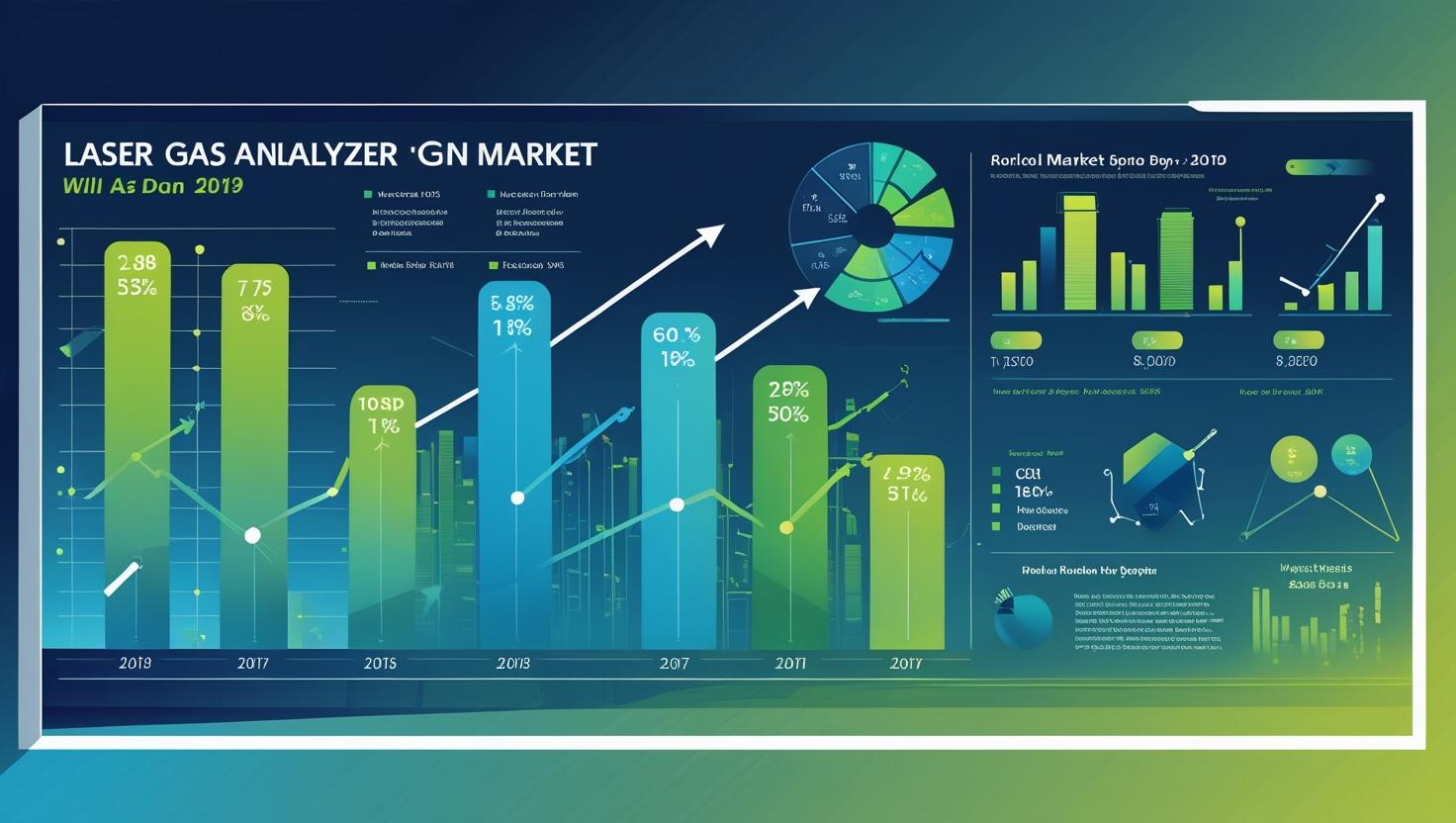The global Laser Gas Analyzer market is entering a dynamic growth phase, powered by increasing capital investments and rapid advancements in research and development. As industries worldwide pursue greater operational efficiency, environmental compliance, and digital transformation, laser-based gas analysis is becoming a key technology for real-time monitoring, precision control, and safety assurance.
The Rise of Laser Gas Analysis
Laser gas analyzers leverage optical technologies—primarily Tunable Diode Laser Absorption Spectroscopy (TDLAS)—to detect and quantify specific gas molecules with exceptional accuracy and speed. These analyzers work by directing a laser beam through a gas sample and measuring the absorption at specific wavelengths, corresponding to the unique spectral signatures of different gases.
This non-contact, real-time approach to gas detection offers numerous advantages over conventional methods, including superior selectivity, high sensitivity, low maintenance, and the ability to operate in extreme industrial environments. With these benefits, laser gas analyzers are increasingly being adopted across diverse sectors, from oil & gas and power generation to pharmaceuticals, chemicals, cement, and environmental monitoring.
Capital Investment Fuels Market Momentum
One of the key factors accelerating the laser gas analyzer market is the surge in capital expenditure by industrial and energy companies. As part of infrastructure modernization and sustainability goals, these companies are investing in smart process control technologies that reduce emissions, increase safety, and optimize performance.
Governments and private sectors alike are channeling funds into industries transitioning to cleaner, more efficient operations. In oil refineries and thermal power plants, laser gas analyzers are replacing aging sensors to improve flue gas analysis and combustion control. In chemical plants and manufacturing facilities, they ensure tighter control of hazardous gases, preventing leaks and supporting compliance with strict regulatory standards.
These investments are not only expanding the installed base of laser gas analyzers but are also spurring demand for advanced, integrated solutions that support digital workflows, predictive maintenance, and automation.
Download PDF Brochure @ https://www.marketsandmarkets.com/pdfdownloadNew.asp?id=120588467

Innovation Through Research and Development
In parallel with capital growth, intensive R&D activities are reshaping the landscape of laser gas sensing. Manufacturers are developing compact, ruggedized, and highly sensitive analyzers tailored for specific use cases. Innovations include:
-
Multi-gas analysis capabilities using a single device
-
Edge computing integration for instant, on-site decision-making
-
Wireless and remote connectivity for real-time monitoring in hard-to-reach areas
-
Extended wavelength range lasers for detection of complex gas mixtures
Research institutions and industry players are also collaborating on refining laser spectroscopy techniques, such as cavity ring-down spectroscopy (CRDS) and quantum cascade lasers (QCL), to push the boundaries of accuracy and application diversity.
These developments are enabling laser gas analyzers to handle a broader range of gases—including carbon monoxide (CO), carbon dioxide (CO₂), methane (CH₄), ammonia (NH₃), sulfur dioxide (SO₂), and nitrogen oxides (NOₓ)—with applications in emissions monitoring, safety controls, and energy efficiency.
Expanding Market Applications
The versatility of laser gas analyzers is another major growth catalyst. While traditionally used in energy and industrial settings, new applications are emerging in healthcare, environmental science, food and beverage processing, and transportation. For example, in the environmental sector, laser analyzers support air quality assessments and greenhouse gas tracking. In pharmaceuticals, they help ensure sterile manufacturing conditions by detecting trace moisture or contaminants.
Portable and handheld laser gas analyzers are also gaining popularity for field-based measurements, especially in regions with limited infrastructure or in mobile emissions testing.
Regional Market Trends
Geographically, Asia-Pacific leads the market in terms of demand and manufacturing activity. Driven by rapid industrialization, rising environmental awareness, and government mandates in countries like China and India, the region is investing heavily in emission control technologies, including laser-based systems.
North America and Europe remain strong markets as well, supported by established industrial bases, strict regulatory frameworks, and growing investment in clean energy. Meanwhile, emerging markets in the Middle East and Latin America are showing increasing interest in adopting laser gas analyzers as part of modernization and compliance strategies.
Key Players and Competitive Landscape
The laser gas analyzer market features several leading technology providers, including:
-
ABB Ltd
-
Siemens AG
-
Yokogawa Electric Corporation
-
Emerson Electric Co.
-
Servomex (Spectris plc)
-
SICK AG
-
AMETEK, Inc.
These companies are continuously expanding their portfolios, investing in next-gen product development, and forming strategic partnerships to meet evolving industry demands.
Outlook: A Market Ready for Smart, Sustainable Growth
With strong financial backing and a clear push toward innovation, the Laser Gas Analyzer market is well-positioned for continued expansion. Its critical role in achieving cleaner production, safer work environments, and compliance with global regulations ensures that demand will only increase in the years ahead.
As process industries become smarter and more data-driven, laser gas analyzers will remain central to operational excellence—enabling industries not just to monitor gases, but to transform how they manage them.
